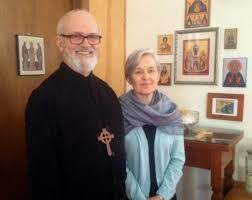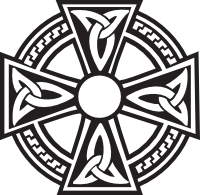Nov. 28, 2023 Newspaper Article, Part 2 of 6

Cranbrook Daily Townsman
Christianity 101 An Orthodox perspective – The first Millenium
Christianity of course began with the birth of Jesus Christ. He who existed before all time, true God of true God taking on human flesh from the womb of a young virgin known in Orthodox circles as “Mary the Mother of God” or “Theotokos” in Greek. In Christian understanding even today, there is little dispute amongst the various Christian sects or denominations that Jesus Christ is not just “a” god but “THE” God who with His Father and the Holy Spirit (The Holy Trinity) created everything that was created. This is classic Christianity, although there are some more recent sects (formed in the last 200 years) that have a different view on this fundamental Christian understanding. Although this was the universal understanding of the Church from the beginning, it was clearly established officially at the first ecumenical council in 325 AD.
The Orthodox, Coptic/Oriental, and Roman Catholic Churches are the only Christian Churches that can trace their unbroken lineage back to Pentecost in a 2000-year continuous history. The Roman Church claims to have St. Peter as their founder although Peter was in Antioch much earlier, and so the Patriarch of Antioch could also make the same claim. The Orthodox Church, both Eastern and Coptic/Oriental claim no founder other than Christ and His Apostles. For the first 1000 years, these three Churches were united in Christian theology (teaching), although in the 5th Century, the Coptic/Oriental Churches split over the definition of the way the two natures of Christ (Fully Human and Fully God) should be expressed. Otherwise, the Orientals have remained “Orthodox” in their theology producing many of the “desert fathers” and other wonderful saints through the centuries.
The Christian Church was established by Christ’s Apostles who consecrated bishops as the heads of the cities throughout and beyond the Roman empire in the 1st Century. The 5 major Patriarchies: Jerusalem, Rome, Antioch, Alexandra, and Ephesus (later transferred to Constantinople) were established, and the Christian “Way” was passed down from the Apostles to their disciples and bishops, known as the Apostolic Fathers – and through to every generation following. As this was not a popular message with some of the Roman Emperors who felt it conflicted with their role as gods, the threat of martyrdom was ever present. Whether you accept that there were only a few thousand killed or a few hundred thousand or more killed during the first 3 centuries of Christianity, the danger in being a Christian was enough to eliminate large Christian gatherings.
Finally in the beginning of the 4th century, Emperor Constantine appeared. He was at least tolerant of Christians, and in 313 issued an Edit of Toleration that Christians were no longer to be killed. Constantine began exploring the tenants of the Christian religion. It was amazing how uniform the Christian message was but one presbyter, Arius, with a few followers, proclaimed that Christ was a created being and “His divinity was a drop in the ocean of His humanity.” Other bishops disagreed. Wishing to get to the truth of the Christian claims, Constantine ordered the Christian bishops and leaders to gather in the city of Nicaea in 325 to rule on this and other contradictions. The stage was set for the first large universal Christian meeting of the Church since the middle of the 1st century!
318 Christian bishops and rulers representing the entire Church gathered and firmly rejected Arius’s teaching. The council confirmed that Christ was fully God and fully man and wrote the famous Nicene Creed, used in the majority of Churches to this day. This creed was based on earlier creeds passed down from the Apostles and Church Fathers. It was decreed at this “1st Ecumenical council” that this creed was to be the boundary of the Christian faith. As God is the same yesterday, today, and throughout all time, no-one was to ever change, add, or subtract from this creed or they would be preaching a different Christ and not be part of the Christian Church.
This 1st council was modeled on the “Council of Jerusalem” in Acts 15 and set the stage for dealing with future disagreements in a conciliar way. A second council was convened in 381 regarding the role of the Holy Spirit and the 2nd part of the Creed was written. The Roman filioque addition to this second part of the creed was to eventually lead to the split between Rome and the Orthodox Church.
